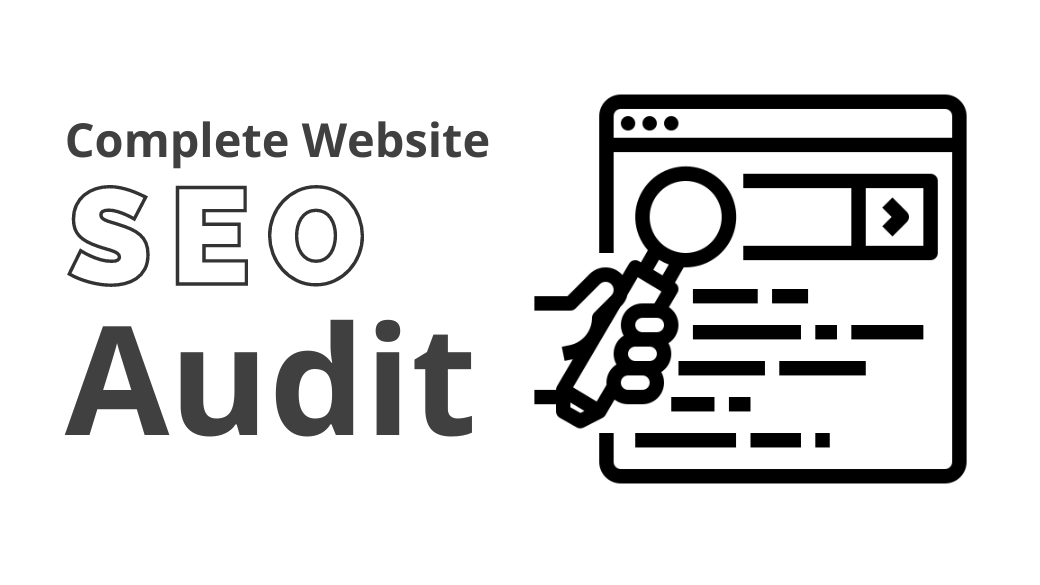A Complete Website SEO Audit is a thorough review and study of a website’s search engine optimization (SEO) performance. It is a methodical procedure carried out by SEO professionals to examine the many parts of a website and identify areas that require modification in order to increase its exposure, ranking, and overall SEO performance.
What is The Website SEO Audit?
A full website SEO audit is a thorough examination of a website’s SEO health and performance. It entails scrutinizing on-page features like meta tags, content quality, and keyword utilization, as well as technical characteristics such as site performance, mobile friendliness, and crawlability.
Backlink profiles, domain authority, and the overall user experience are all taken into consideration. The audit analyzes problems, opportunities, and areas for growth in order to improve search engine exposure, organic traffic, and user satisfaction. It forms the basis for developing a customized SEO plan to boost the website’s ranking in search engine results and overall online presence.
Here are the key components of an SEO audit:
- Technical SEO Analysis
- On-Page SEO Analysis
- Off-Page SEO Evaluation
- Analytics and Performance Metrics
- User experience and site design
- Security and Technical Errors
- Penalty and Algorithm Assessment
Why is a Website SEO Audit required, and How Does It Work?
A website SEO audit is a methodical procedure that entails assessing numerous components of a website in order to identify areas for improvement. Here’s a step-by-step guide to performing a website SEO audit:
Set Clear Objectives:
Define the objectives of your SEO audit. Determine your goals, whether they are to improve search engine results, increase organic traffic, or improve the user experience.
Crawl Your Website:
Analyze your website’s structure, URLs, and on-page features using SEO crawling tools such as Screaming Frog, Ahrefs, or SEMrush. This will aid in identifying technical faults and areas that require improvement.
Keyword Analysis:
Examine your website’s keyword approach. Ensure that your target keywords are relevant to your content and audience. Identify chances to optimize existing content or produce new content around relevant keywords.
On-Page SEO Evaluation:
Examine individual web pages for on-page SEO elements such as:
- Examine meta tags (titles and descriptions) for keyword relevancy and optimization.
- Examine the structure and keyword usage of heading tags (H1, H2, etc.).
- Check the URL structure to verify it is clean and meaningful.
- Check the alt attributes of images for keyword relevancy.
- Assess the content’s quality and keyword density.
Technical SEO Assessment:
Concentrate on technical SEO aspects:
- Check the performance of your website and optimize it for better loading times.
- Ensure that all devices are mobile-friendly and responsive.
- Examine the site design and URL structure for usability.
- Examine XML sitemaps to aid search engine crawling.
- Resolve duplicate content concerns.
- For content variations, use canonical tags.
Content Review:
Examine the content on your website’s quality, relevancy, and uniqueness. Identify areas for improvement in existing material as well as holes that could be addressed with new, excellent information.
Backlink Analysis:
To assess your backlink profile, use tools such as Ahrefs or Majestic. Determine harmful or low-quality backlinks that may be detrimental to your SEO efforts. Priority should be given to obtaining high-quality backlinks from authoritative domains.
User Experience (UX):
Examine the design, navigation, and user experience of the website. Make sure the site is simple to use, loads quickly, and provides a pleasant experience for visitors.
Analytics and Performance Metrics:
Analyze website performance indicators with tools such as Google Analytics. To assess the effectiveness of SEO activities, examine traffic patterns, bounce rates, conversion rates, and other pertinent KPIs.
Security and Technical Errors:
Security and technical errors are essential for the search engine. Inspect for security flaws and technical problems that could have an impact on SEO and the user experience.
Penalty and Algorithm Assessment:
Look for Google penalties or algorithmic flaws that could harm your rankings. Try to penalty-free websites for any search engine.
Competitor Analysis:
Competitor Analysis or Analyze your competitors’ SEO strategies to find areas of strength and possibilities for improvement.
Local SEO (if applicable):
Evaluate whether Google My Business (GMB) listings for local businesses are accurate and consistent. Optimize for local search phrases and guarantee NAP consistency across directories.
Monitor and Report:
Monitor the impact of your SEO activities on a regular basis and track progress toward your goals. Provide reports to stakeholders to keep them up to date on progress and results.
A well-executed SEO audit can reveal possibilities to improve your website’s exposure in search engines and general performance. Remember that SEO is a continuous process, and completing audits on a regular basis can assist guarantee that your website remains optimized and competitive in the ever-changing digital market.
In Summery
Finally, a website SEO audit is a critical and planned procedure for increasing a website’s search engine presence and performance. It is a road map for optimizing on-page elements, addressing technical challenges, improving the user experience, and refining content strategy. Websites may expect to experience higher rankings, increased organic traffic, enhanced user engagement, and, ultimately, greater online success by doing a thorough audit and adopting the advised improvements.
Regular SEO audits guarantee that websites remain competitive in an ever-changing digital landscape, driving long-term growth and meeting SEO objectives.

